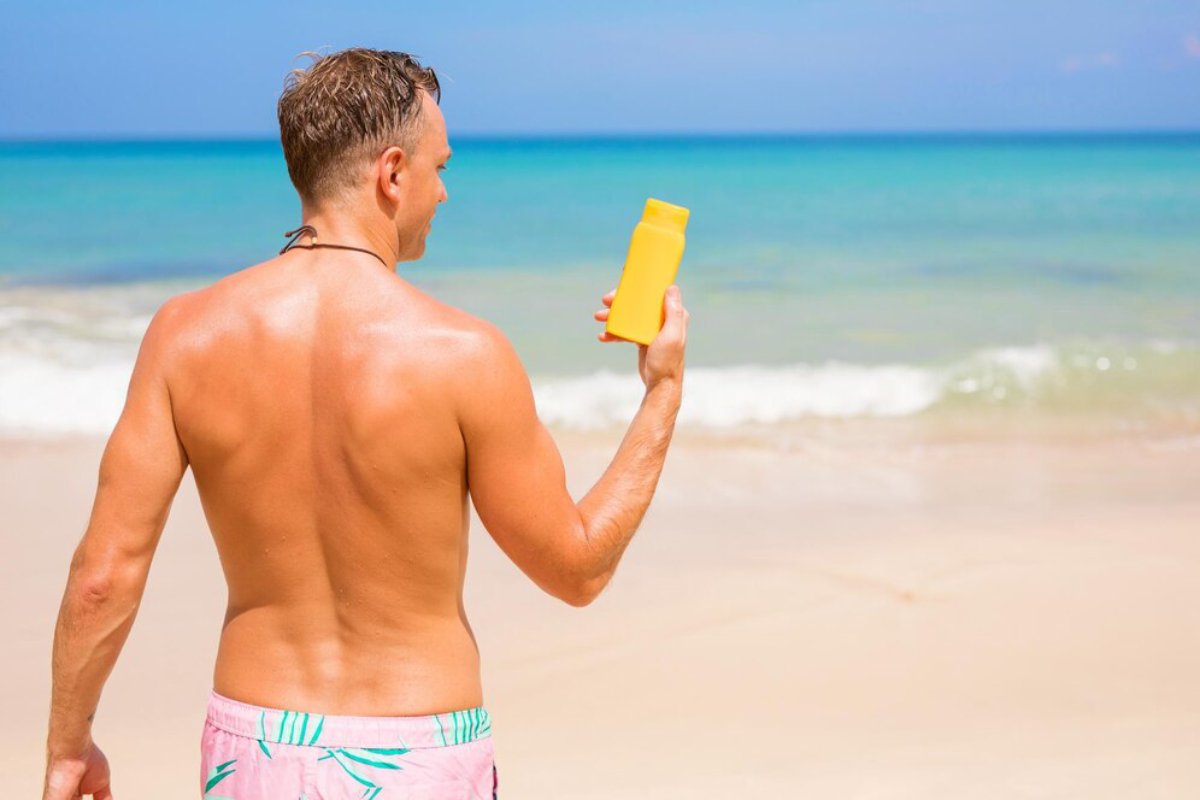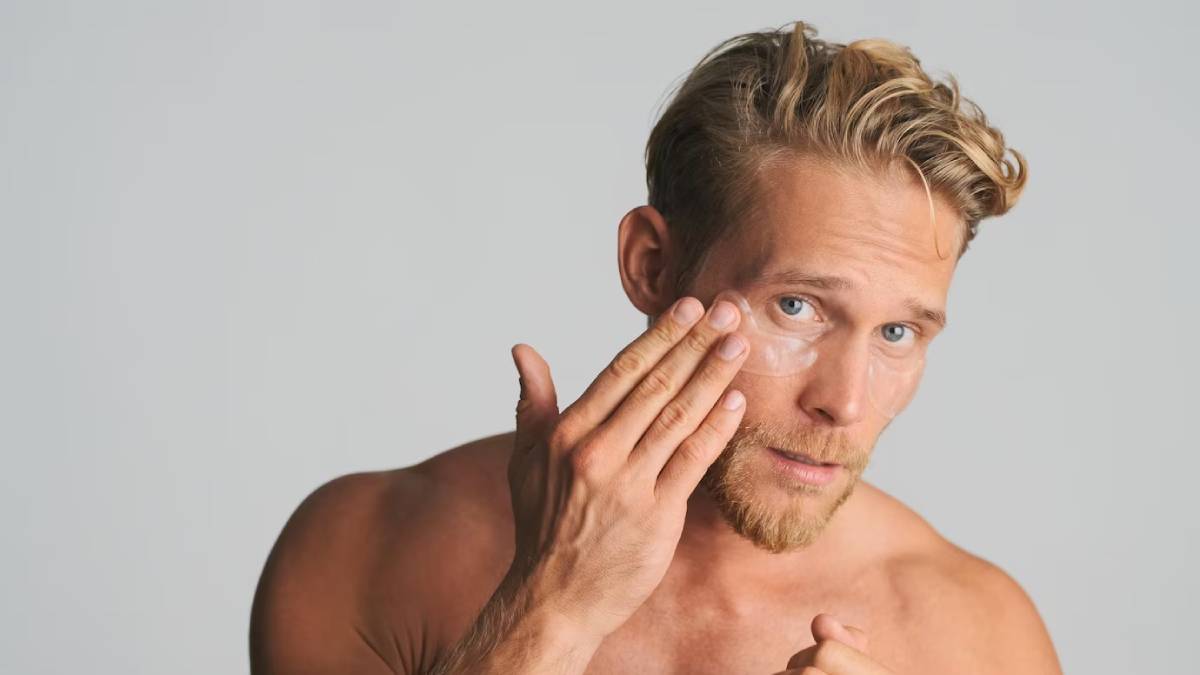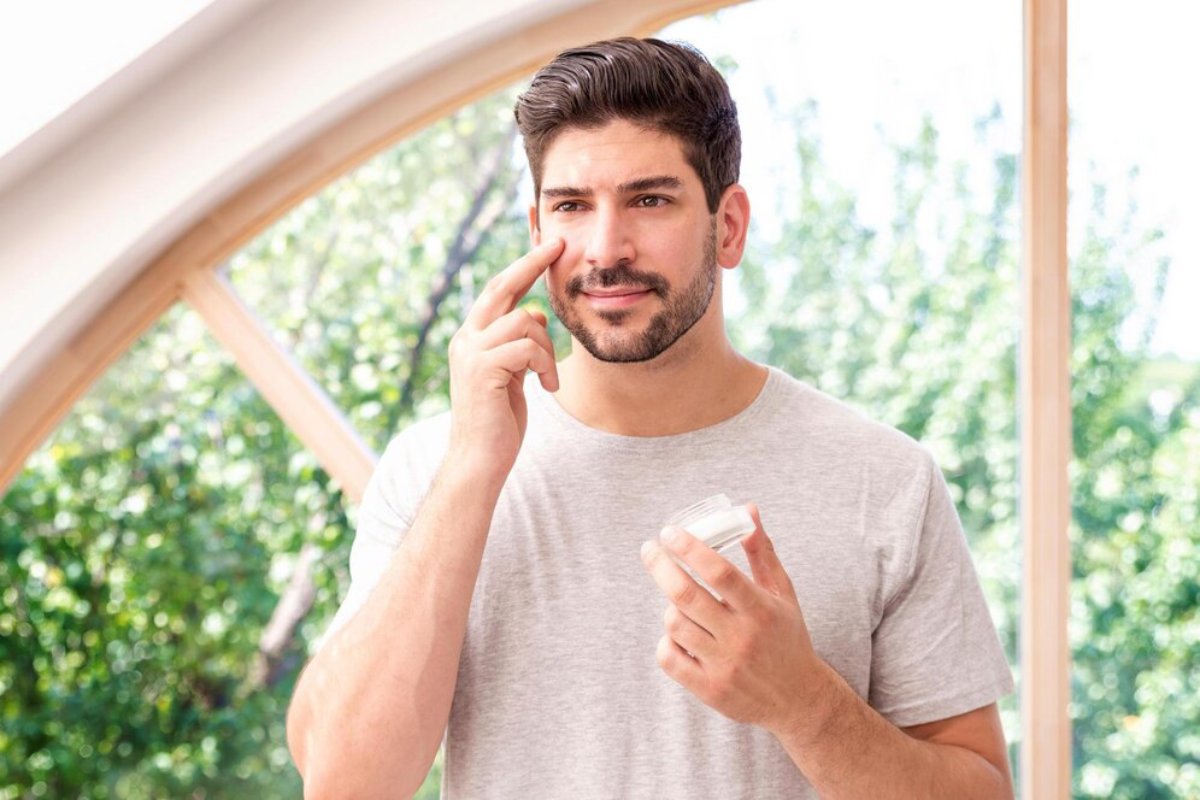
How to Treat Sunburned Skin Effectively
We’ve all been there—a day outdoors turns into a night of red, hot, stinging skin. Sunburn doesn’t just hurt, it can also damage your skin’s barrier, accelerate ageing, and increase long-term risks.
Our team found that men often delay sunburn treatment or reach for the wrong products, which can make symptoms worse. But with the right post-sun care, you can relieve discomfort, restore hydration, and help your skin heal properly.
This guide explains how to treat sunburned skin effectively—from first response to full recovery—so you can bounce back faster and protect your skin moving forward.
Pro Tip: Sunburn recovery isn’t just about what you put on—it’s also about what you avoid in the hours and days after exposure.

Quick Guide: What to Do After a Sunburn
- Get out of the sun immediately.
- Cool the skin with water—not ice.
- Apply aloe vera or fragrance-free moisturiser.
- Stay hydrated from the inside out.
- Avoid harsh soaps, scrubbing, or tight clothing.
- Don’t pop blisters—protect and let them heal.
- Use SPF daily to protect recovering skin.
Important: The goal is to reduce inflammation, rehydrate the skin, and support barrier repair—while avoiding anything that worsens damage.
Step 1: Get Out of the Sun Immediately
If your skin looks red or feels hot to the touch, get into the shade or indoors right away. Continued exposure—even for a few more minutes—can make a mild burn worse.
First Actions:
- Remove your shirt or any tight clothing
- Seek a cool, shaded area or air-conditioned space
- Avoid hot water, direct fans, or rubbing the skin
Tip: Prevention starts now—stop the burn from progressing before you reach for any treatment.
Step 2: Cool the Burn—Gently
Your skin needs relief, but avoid extremes. Ice or ice-cold water can cause additional irritation or damage.
What Works:
- Cool (not cold) showers
- Damp cloth compresses for 10–15 minutes
- Spritzing with thermal water or aloe mist
Avoid using soaps, exfoliants, or scented body washes at this stage.
Pro Tip: Add a few tablespoons of baking soda or colloidal oatmeal to a lukewarm bath for extra soothing.

Step 3: Apply a Soothing Moisturiser or Gel
Once your skin is cool and dry, apply a product that will soothe inflammation and start the repair process.
Best Ingredients for Sunburn Relief:
- Aloe vera gel (pure, fragrance-free)
- Panthenol (Vitamin B5) – calming and healing
- Calendula extract – natural anti-inflammatory
- Hyaluronic acid – deep hydration
- Colloidal oatmeal – relieves itching
Avoid:
🚫 Petroleum jelly or heavy ointments (can trap heat)
🚫 Lidocaine or benzocaine (can cause allergic reactions)
🚫 Alcohol-based lotions (can sting and dry out skin)
Application Tip: Store your aloe gel or moisturiser in the fridge for extra cooling comfort.
Step 4: Stay Hydrated and Nourished
Sunburn draws moisture away from your skin and body. Hydration helps your skin repair from within.
What to Do:
- Drink water frequently throughout the day
- Avoid alcohol and caffeine, which dehydrate
- Eat hydrating foods: cucumber, watermelon, citrus fruits
- Consider supplements like vitamin C or E to support recovery
Bonus: A rehydrated body = faster skin regeneration and less peeling.
Step 5: Wear Loose, Breathable Clothing
Friction and heat are your enemies right now. Tight shirts, synthetic fabrics, or backpacks can aggravate your skin and slow healing.
Opt For:
- Loose cotton or bamboo fabrics
- Light colours that don’t absorb heat
- No collars or neckbands that rub burned areas
- Avoid hats that trap heat if your scalp is burned
Pro Tip: If you’re sleeping with a sunburn, use a silk pillowcase or smooth sheet to minimise friction overnight.
Step 6: Let Blisters Heal Naturally
If your sunburn is severe enough to cause blistering, treat the area as you would a minor wound.
Do:
- Leave blisters intact—they protect against infection
- Cover with a sterile gauze bandage if needed
- Apply an antibiotic ointment if the blister opens naturally
Don’t:
🚫 Pop, pick, or peel
🚫 Apply makeup, scented lotion, or sunscreen directly on blistered skin
🚫 Expose to sunlight until fully healed
When to Seek Medical Help:
- Blisters cover a large area
- Signs of infection (swelling, pus, fever)
- Severe pain, nausea, or dizziness

Step 7: Use After-Sun Care Consistently
Continue moisturising your skin 2–3 times per day as it heals. This not only relieves discomfort but also minimises peeling and flaking.
Aftercare Routine:
- Morning: Cleanse gently → Hydrating moisturiser → SPF
- Evening: Cool shower → Soothing moisturiser or aloe → Loose clothing
- Midday: Mist or reapply moisturiser as needed
Keep up your hydration and avoid direct sun for at least 3–5 days.
Step 8: Protect Skin From Future Burns
The best treatment for sunburn is prevention. Once your skin has healed, keep it protected moving forward.
Sun Protection Essentials:
- SPF 30 or higher, broad-spectrum sunscreen
- Apply 30 minutes before sun exposure, reapply every 2 hours
- Use water-resistant sunscreen if swimming or sweating
- Wear a hat and sunglasses outdoors
- Avoid peak sun (10am–4pm) when UV levels are highest
Recovery Tip: Your skin remains sensitive even after it looks better. Continue SPF use daily to avoid repeat damage.
Top Products to Soothe Sunburned Skin (2025 Picks)
| Product Type | Recommended Option |
| Aloe Gel | Nature Republic Soothing Aloe 92% Gel |
| Moisturiser | CeraVe Moisturising Cream / La Roche-Posay Cicaplast Baume B5 |
| Mist | Avène Thermal Spring Water Spray |
| After-Sun Lotion | Banana Boat Soothing Aloe Aftersun |
| Oatmeal Bath | Aveeno Soothing Bath Treatment |
| Lip Repair | Aquaphor Lip Repair with SPF |
Warning: If your sunburn is accompanied by severe blistering, fever, nausea, or chills, seek medical attention. These could indicate sun poisoning or heat stroke.
Frequently Asked Questions About Treating Sunburn
1. How long does sunburn take to heal?
Most mild sunburns heal in 3–5 days, with peeling occurring around day 4. Severe burns may take 7–10 days or longer.
2. Can I still moisturise if my skin is peeling?
Yes—you should. Use gentle moisturisers without fragrance. Don’t pick at peeling skin; let it shed naturally.
3. Should I exfoliate peeling skin?
No. Avoid scrubs or exfoliants until the skin has fully healed. Focus on hydration instead.
4. Can I go back in the sun the next day?
Only if fully covered and wearing broad-spectrum SPF. But ideally, stay out of direct sunlight until skin recovers.
5. Does aloe vera really work?
Yes. Pure aloe vera is a natural anti-inflammatory and hydrator that soothes sunburn and speeds up healing.
Treat Now, Prevent Later
Sunburn is a clear message from your skin—and how you respond makes all the difference. With calm, consistent care, you can soothe discomfort, minimise damage, and restore balance.
The next step? Build better sun habits. Sunscreen, hydration, and smart exposure are the long-term tools your skin needs to stay healthy, comfortable, and protected.


